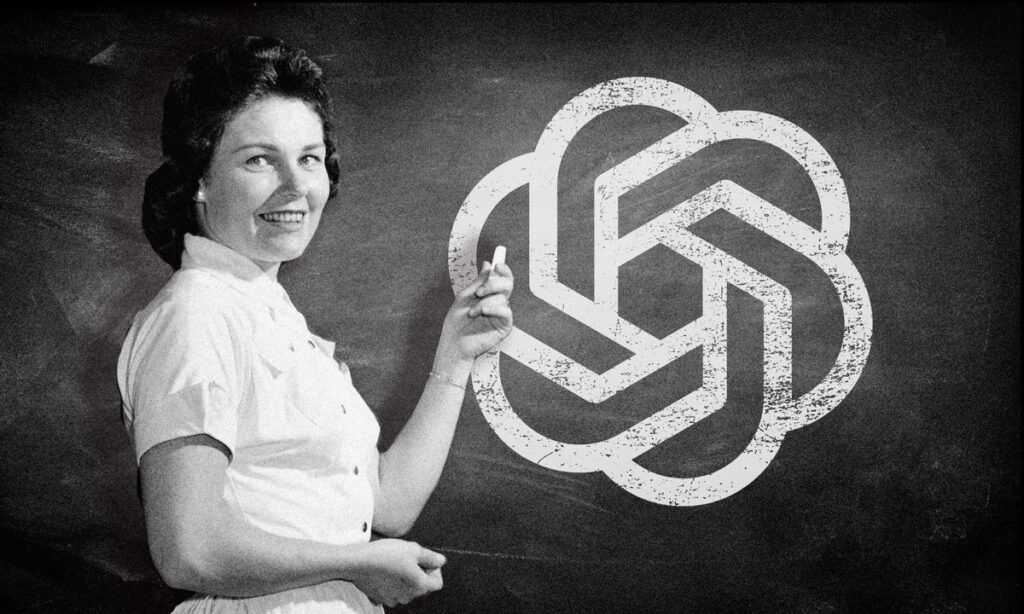ChatGPT is rapidly reshaping how educators develop lessons and assess student work. In classrooms from sixth grade to high school, teachers are discovering that this AI-powered assistant serves as a creative partner, boosting productivity, engagement, and even work‑life balance.
Take Ana Sepúlveda, a math teacher in Dallas. When her geometry class struggled to connect abstract shapes with real life, she turned to ChatGPT. Within seconds, the AI produced a five‑page, soccer‑themed lesson plan, showing how geometry pops up in field layouts, ball design, and stadium architecture. It even offered prompts like “Why do those angles matter in soccer?” plus a hands‑on project inviting students to design their own fields. And when needed, the AI translated materials into Spanish—something Sepúlveda says has made a big difference for her dual‑language cohort. The result? More student curiosity, creative projects, and fewer hours spent planning and translating.
It’s not just isolated cases. A new Gallup/Walton Family Foundation poll found that approximately 60 percent of U.S. public school teachers used AI tools like ChatGPT during the 2024‑25 school year. Most teachers who incorporated AI weekly say it saves up to six hours of work each week, time they’ve redirected toward deeper student interaction and curricular innovation.
And the payoff goes beyond time savings. Teachers report that AI has improved the quality of their lesson materials by helping them tailor content to student needs and providing more nuanced feedback. Nearly 80 percent say AI trimmed down administrative tasks, while about 60 percent say it enhanced how they adjust content and communicate with students.

Balancing Efficiency with Educator Oversight and Ethics
While teachers harness ChatGPT’s time‑saving powers, many caution that AI should complement—not replace—professional judgment.
Sal Khan, CEO of Khan Academy, envisioned the future classroom as one aided by “five amazing graduate students”—AI companions that support lesson design, grading, and student engagement—but always under a teacher’s guidance. Khan stresses that while AI can spotlight when a student is struggling or exceptionally engaged, it cannot replicate the social and emotional guidance only a human educator can provide.
Indeed, about two dozen U.S. states have issued guidelines to help educators use AI responsibly. Ethical use emphasises assigning final grading decisions to educators, especially for nuanced input like essays. AI may excel with objective assessments, but it can miss the subtlety of student voice or creativity, and teachers note the importance of allowing students to flag questionable AI‑generated feedback.
Academic integrity also remains a core concern. Teachers fear that students could misuse AI to avoid learning. Educators note that perfect grammar or overly complex phrasing can signal AI authorship. As a result, many schools are adapting lesson formats, shifting toward in‑class activities and project‑based work to encourage original thinking. Meanwhile, districts are piloting detection software like GPTZero and Turnitin and building AI literacy into the curriculum.
As Donnie Piercey, a fifth‑grade teacher in Kentucky, explains, AI becomes a valuable classroom tool when used intentionally to spark critical thinking rather than replace it. Her students have even learned to “compete” with AI in writing exercises, sharpening their understanding of both human and machine‑generated content.
The Return on AI: Time, Creativity, and Teacher Well‑Being
Teachers are unanimous: reclaiming lost hours is transformational.
One middle‑school UK teacher shared in a Reddit thread that ChatGPT “is giving my Sundays back and helping me deliver more informative and fun lessons…it is life‑transforming for me and students!”
Mary McCarthy, a high school social studies teacher in Houston, agrees: AI not only made her weekdays easier, it “transformed my weekends” and brought back a healthier work‑life balance. She credits district‑led AI training for helping her model ethical usage for students.
The payoff is twofold. Students benefit from more engaging, personalised lessons. And teachers, long prone to burnout from grading and admin tasks, find renewed energy for mentorship and classroom connection.
In districts facing teacher shortages, this could be vital. With AI fellow assistants handling routine work, educators can focus on what only human teachers can: building relationships, coaching through challenges, and fostering moral and social growth.
Future Directions and Real‑Time Classroom Intelligence

Sal Khan’s vision extends further: AI that doesn’t just grade, but pays real‑time attention. Imagine an AI assistant that notes a disengaged student, flags them to the teacher after class, and suggests personalised next steps. Or one that detects when a particular concept captures a student’s interest, prompting you to weave it into future lessons. These assistants could also update parents with real‑time milestones, not just semester reports.
Meanwhile, educational researchers are studying how AI models stack up against traditional planners. A recent April 2025 comparative study found that teachers tend to favour human‑created lesson plans for early grades, while AI‑generated content is competitive in later grades, especially for structured, routine tasks. The consensus: embrace a hybrid model where AI handles repetitive tasks and teachers add nuanced guidance.
Teacher, ChatGPT and Other AIs: A Collaborative Future

ChatGPT and similar AI tools are ushering in a new era for education—one where the teacher’s role evolves, not diminishes.
By auto‑generating quizzes, drafting lesson outlines, and grading objective responses, AI frees teachers to focus on personal mentorship and critical instruction. But it’s the educator’s expertise that ensures quality, ethical use, and the protection of intellectual growth.
As classroom AI enters its next phase—assisting in real‑time monitoring and fine‑tuning lesson delivery—the role of teachers remains irreplaceable. Their judgments, ethical clarity, and social connections define a classroom’s heart.
In short, the AI‑powered classroom isn’t a future without teachers—it’s one with better‑equipped teachers. The lesson is clear: ChatGPT transforms teaching when it empowers educators, not supplants them.
Join Our Social Media Channels:
WhatsApp: NaijaEyes
Facebook: NaijaEyes
Twitter: NaijaEyes
Instagram: NaijaEyes
TikTok: NaijaEyes








































